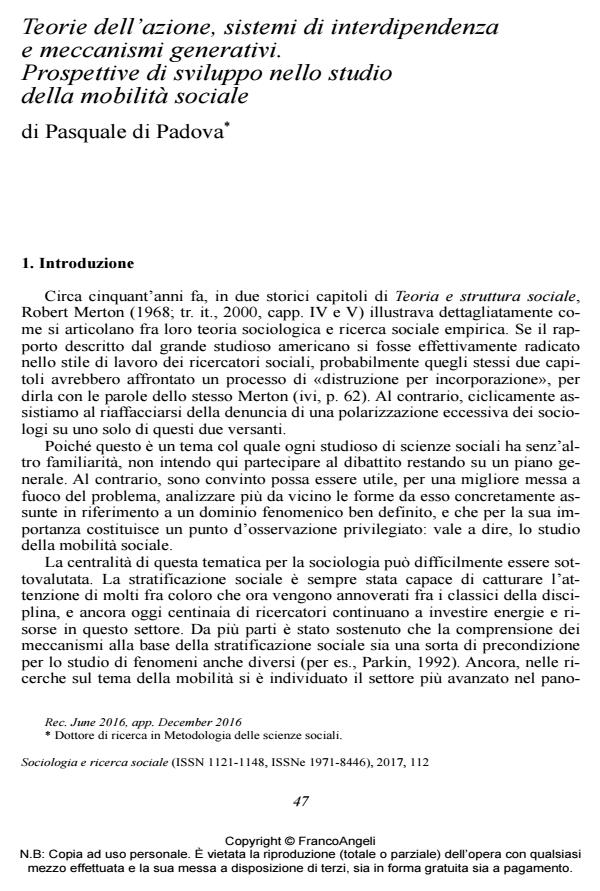Teorie dell’azione, sistemi di interdipendenza e meccanismi generativi. Prospettive di sviluppo nello studio della mobilità sociale
Journal title SOCIOLOGIA E RICERCA SOCIALE
Author/s Pasquale di Padova
Publishing Year 2017 Issue 2017/112
Language Italian Pages 22 P. 47-68 File size 241 KB
DOI 10.3280/SR2017-112003
DOI is like a bar code for intellectual property: to have more infomation
click here
Below, you can see the article first page
If you want to buy this article in PDF format, you can do it, following the instructions to buy download credits

FrancoAngeli is member of Publishers International Linking Association, Inc (PILA), a not-for-profit association which run the CrossRef service enabling links to and from online scholarly content.
Pasquale di Padova, Teorie dell’azione, sistemi di interdipendenza e meccanismi generativi. Prospettive di sviluppo nello studio della mobilità sociale in "SOCIOLOGIA E RICERCA SOCIALE " 112/2017, pp 47-68, DOI: 10.3280/SR2017-112003